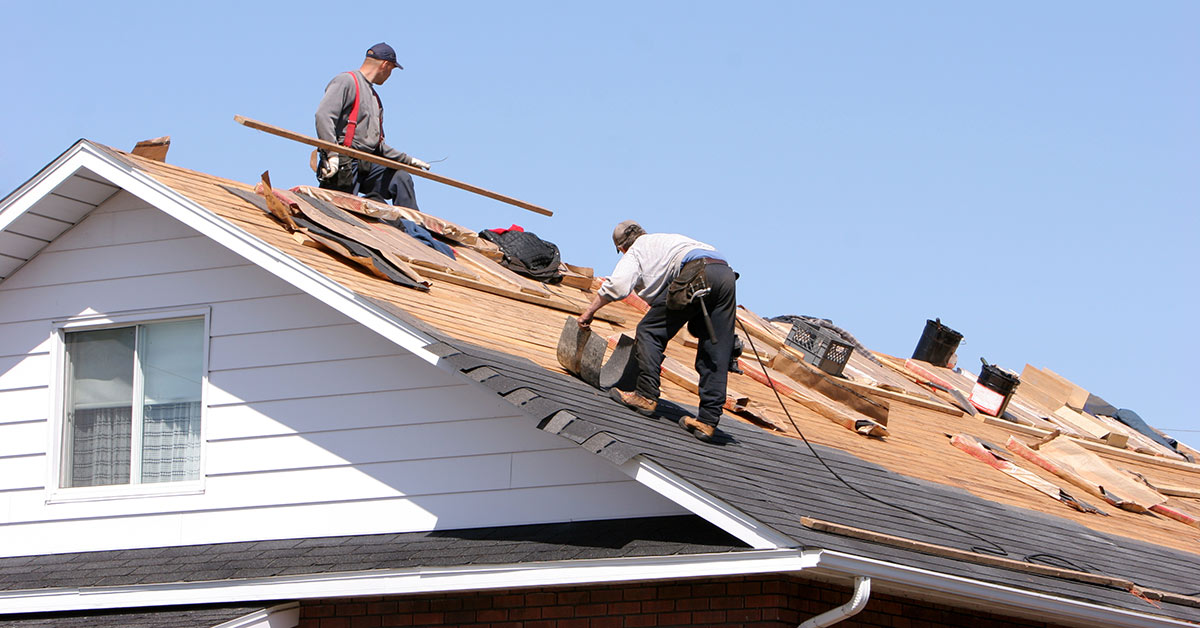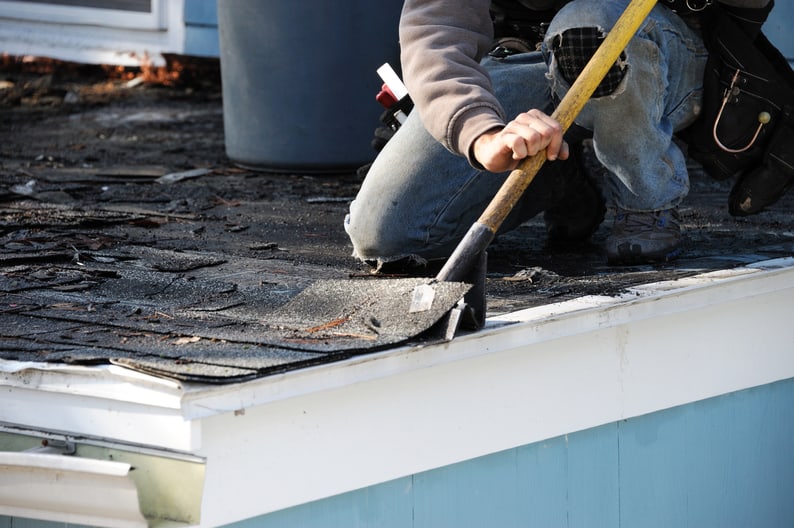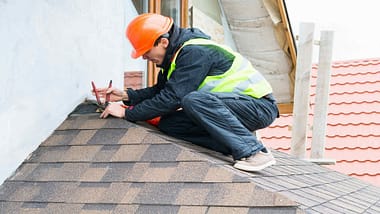Preventative Roof Covering Maintenance: Tips to Prevent Pricey Repair Work
To stay clear of costly repair services, you should examine your roofing system routinely for missing or harmed shingles, clean your gutters and downspouts to prevent blockages, and trim looming branches. These easy steps can significantly prolong your roof covering's lifespan, and there's lots a lot more you can do to shield your financial investment.
Evaluate Your Roof Covering Routinely
When you check your roofing system consistently, you can capture prospective issues prior to they come to be expensive repair services. Start by inspecting for missing, cracked, or curling roof shingles; these are signs that your roof may require attention.
After a tornado, it's necessary to assess your roofing for damage caused by high winds or heavy debris. Don't fail to remember to evaluate the underside of your roofing system in the attic; appearance for signs of wetness or mold, which can show leakages.
Tidy Gutters and Downspouts
Routine roof inspections naturally result in an important task: cleaning your downspouts and seamless gutters. Clogged up gutters can trigger water to support, bring about possible roofing system leakages and architectural damage. To stop these concerns, make it a habit to check your gutters at the very least two times a year, specifically after hefty storms or fall when leaves collect.
Don't forget to inspect downspouts for clogs. If water isn't moving openly, you could need to utilize a plumber's serpent or a hose to get rid of the obstruction.
Address Overhanging Branches
Overhanging branches can pose a severe danger to your roof covering, so it's essential to cut them frequently. Not only can they create damage throughout tornados, yet they can additionally invite insects. Make it a habit to evaluate for any kind of signs of wear or damages to keep your roofing in leading shape.
Trim On A Regular Basis
One of the most crucial steps in roofing system upkeep is to trim those branches that hang also close to your home. Routinely cutting back these branches maintains your roofing system clear and minimizes the risk of pests and leakages. You do not require to tackle this job alone; working with a specialist arborist can ensure reliable and risk-free cutting, shielding your roofing and improving your home's total appearance.
Evaluate for Damage
 roof repair
roof repair
Look for Damaged or Missing Out On Tiles
It's necessary to check your roof shingles routinely for any damage or missing out on items. If you find any concerns, replace missing shingles immediately to stop further issues. Maintain an eye on exactly how the climate impacts your roof covering, as harsh conditions can lead to use and tear.
Inspect Consistently for Damages
Routinely examining your roof for damages is important to keeping its honesty and extending its life expectancy. Check your roofing after heavy storms or solid winds, as these problems can dislodge or damage tiles. By making roofing inspections a regular component of your upkeep regimen, you can capture problems early and conserve on your own from expensive fixings down the line.
Replace Missing Out On Shingles Quickly
After looking for any damages throughout your assessments, you may locate that some shingles are missing out on or compromised. Don't wait to change them; timely activity can stop further problems. Missing out on roof shingles subject your roof covering to wetness, which can lead to leaks and even more comprehensive damages gradually.
Make sure to utilize tiles that match your roofing system's color and design for a smooth appearance. Maintaining your roofing system in top form is vital for protecting your home and staying clear of expensive repairs down the line.
Monitor Climate Influence Regularly
As storms roll through your location, keeping a close eye on your roof becomes crucial. After each storm, take a minute to check your roofing for any kind of harmed or missing shingles. Search for granules in your seamless gutters, which can indicate damage. If you find any kind of shingles that are fractured, crinkled, or totally gone, deal with the problem right away to avoid water leaks and additional damage. Climbing onto the roofing system isn't always required; you can typically find troubles from the ground with field glasses. Do not neglect to look for debris build-up, as it can catch dampness and result in rot. Routine surveillance helps you capture small problems prior to they intensify, saving you time and cash over time.
 roof repair
roof repairEnsure Correct Ventilation
While lots of house owners concentrate on the exterior and structural aspects of their roofings, ensuring correct ventilation is important for keeping its longevity and efficiency. Poor air flow can lead to warmth buildup and dampness buildup, which can cause damages over time.
Proper air flow not only improves your roof covering's lifespan but additionally improves power performance, maintaining your home comfy year-round. By taking these actions, you're investing in your roofing's health and avoiding expensive fixings down the line.
Seek Signs of Leakages
Correct ventilation aids stop dampness build-up, but despite excellent airflow, it is very important to watch out for indicators of leaks. Start by examining your ceilings and walls for water stains or discoloration, which can suggest a leakage above. Do not fail to remember to check your attic for damp spots, mold and mildew, or mold, as these can be very early indication. Look for peeling off paint or gurgling wallpaper, also; these commonly signal moisture invasion.
Outside, examine your roofing for missing tiles, cracks, or harmed flashing, as these susceptabilities can lead to leakages. On a regular basis examining for these signs will help keep your roof covering's integrity and keep your home secure and completely dry.
Set Up Specialist Inspections
 roof repair
roof repair
Go for a minimum of one inspection annually, ideally in the spring or loss, to line up with seasonal changes. Throughout these inspections, specialists can identify potential risks like missing out on tiles, damaged blinking, or indicators of mold. They'll likewise examine for particles accumulation that might result in water merging.
Don't wait for visible indicators of trouble; taking proactive steps can expand your roof covering's life-span. Investing in routine inspections not only shields your home but also offers you satisfaction knowing your roof covering remains in good condition.
Often Asked Concerns
How Usually Should I Carry Out Roof Inspections?
You ought to perform roofing system inspections at the very least twice a year, ideally in spring and fall. Routine checks aid you find possible concerns early, saving you money and time on pricey repair work down the line.
What Devices Do I Required for Roofing Upkeep?
For roof covering upkeep, you'll require a strong ladder, safety belt, roof covering nails, a hammer, an energy knife, caulk, a trowel, and a flashlight. Don't fail to remember handwear covers and Residential roofing safety goggles to keep on your own secured!
Can I Tidy My Roof Covering Myself?
Yes, you can clean your roofing yourself. Just make specific you have the right tools, put on safety gear, and adhere to correct techniques. It's crucial to be cautious to prevent crashes and assure efficient cleansing.
Exactly How Can I Identify Roofing Leaks Early?
To identify roof covering leaks early, you'll wish to evaluate your roofing system consistently. Look for water stains, mold and mildew, or missing out on shingles. Take note after hefty rainfall, and do not think twice to inspect the attic room for wet places.
What Are the Indicators I Required a New Roofing System?
If you observe curled or missing out on roof shingles, consistent leakages, or water stains on ceilings,You'll require a new roof covering. Furthermore, if your roof's age surpasses two decades, it's important to contemplate substitute earlier instead than later on.
To stay clear of costly fixings, you should examine your roofing consistently for missing out on or harmed tiles, clean your downspouts and seamless gutters to protect against obstructions, and trim looming branches. Missing out on tiles expose your roof to dampness, which can lead to leakages and more extensive damage over time.
After each storm, take a moment to examine your roofing for any type of damaged or missing out on shingles.Outside, examine your roof for missing shingles, fractures, or damaged flashing, as these vulnerabilities can lead to leaks.To determine roof covering leaks early, you'll desire to check your roof covering frequently.